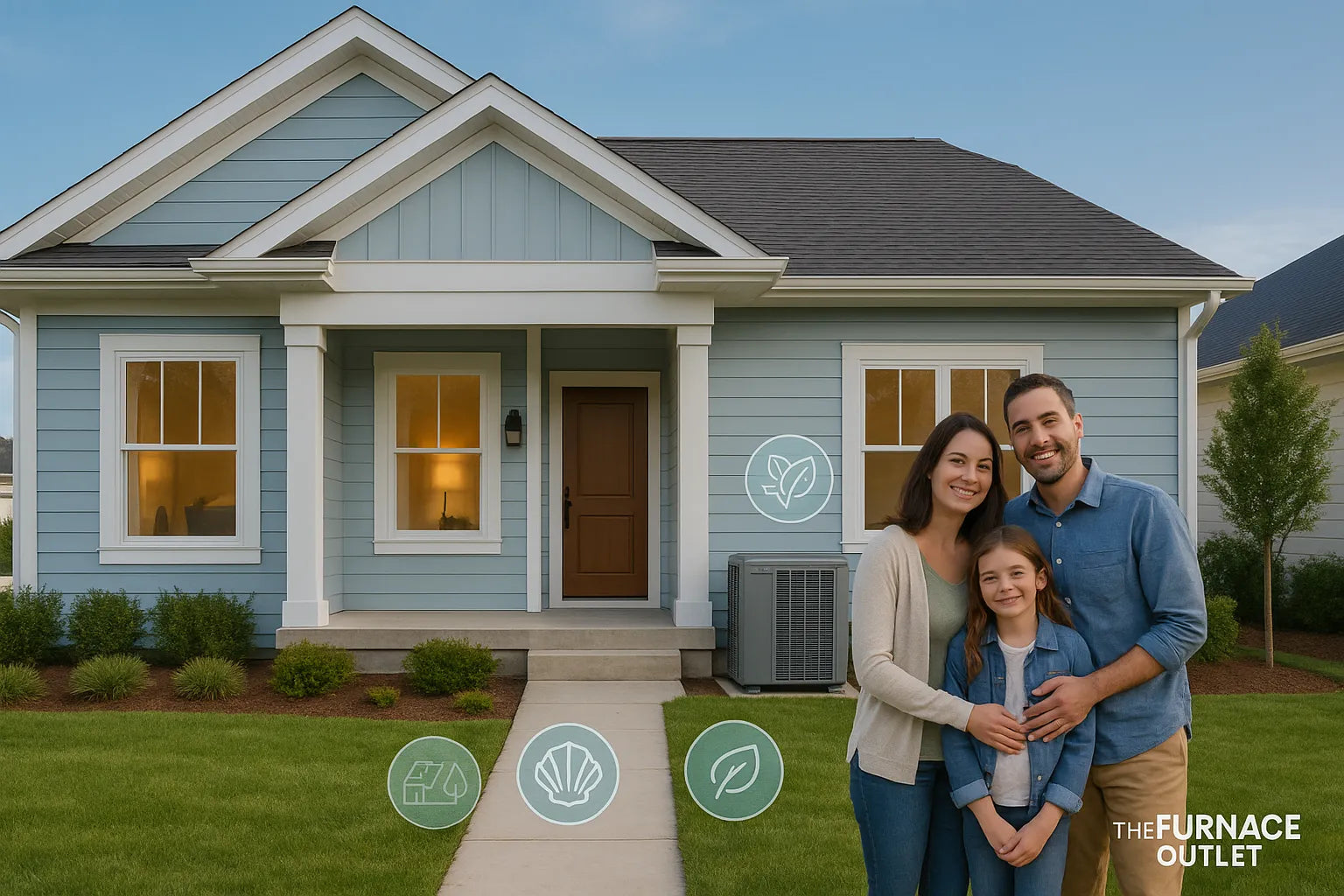If you live along the Pacific Coast in Climate Zone 3C, pick an HVAC system that fights salt corrosion and sips electricity. That usually means a variable-speed heat pump or ductless mini-split system built with marine-grade metals, sealed electronics, and intelligent controls. Pair it with tight ductwork, or skip ducts altogether, and you’ll stay comfortable year‑round while avoiding rusted‑out equipment and sky‑high energy bills. Why Zone 3C Needs Special HVAC Gear
The “warm‑marine” label sounds mild, but salty mist, humidity swings, and cool nights combine to erode standard steel and wiring. Outdoor units corrode, coils leak, and efficiency tanks. A purpose-built, salt-air-ready system utilizes protective coatings and stainless steel hardware, ensuring you don’t need to replace equipment every five years. It also runs efficiently in shoulder seasons when you’re neither freezing nor roasting. That combination—durability plus low operating cost—is the heart of this Climate Zone 3C Warm Marine HVAC Checklist.
Corrosion‑Proof Construction: Materials That Last
Look for epoxy‑ or powder‑coated coils, marine‑grade aluminum fins, and stainless‑steel fasteners. Some brands even offer factory “coastal kits” that seal control boards and wiring. If you’re shopping for parts online, focus on units that advertise coastal protection or salt‑spray testing. The extra up‑front cost beats paying a tech to swap out rusted components later.
See R32 condensers with coastal coatings for models specifically designed to withstand salt exposure.
High‑Efficiency Heat Pumps Rule Mild Marine Temps
A modern, variable‑speed heat pump moves heat instead of making it, slashing electric use during the region’s long “shoulder” seasons. Coastal-rated units often carry a SEER rating of 18+ while maintaining efficiency down to 40°F.
Need backup heat? Dual-fuel packaged systems combine a heat pump with a small gas furnace for chilly snaps, see R32 dual-fuel packaged units.
Variable‑Speed & High SEER: Everyday Energy Savings
Variable-speed compressors and ECM fans ramp gently, matching the exact load instead of cycling at full blast. That means quieter runs, tighter humidity control, and lower power bills. Check for SEER2 ratings above 17 and HSPF2 above 8.5 on product spec sheets. Smart thermostats further boost savings with weather-forecast scheduling, most brands now support Wi-Fi apps out of the box.
Ductless Mini‑Splits vs. Traditional Ducts
Salt‑air damage often sneaks in through leaky attic ducts. Ductless mini‑splits skip that risk entirely, placing the air handler indoors and the compressor outdoors via a sealed line set. Home offices, add-ons, and two-story homes appreciate the zoning flexibility. Humidity Control Tools: ERVs & Built‑In Dehumidify Modes
Even mild coastal days carry enough moisture to feed mold. Systems with builtin dehumidification or a dedicated Energy Recovery Ventilator (ERV) pull moisture out while exchanging heat, easing the load on the main unit. An ERV can recover about 70 % of conditioned air energy, big savings in a year‑round mild climate.
Smart Controls & Remote Monitoring
Salt corrosion can cause electronics to short out without warning. Smart controls send fault codes and performance data to your phone before a major breakdown. They also learn your habits: if you’re at work, the system slows down; heading home, it speeds up. Pair an ERV or dehumidifier to the same hub for whole‑house oversight.
Installation Best Practices for Coastal Protection
Even the best hardware fails if installed in a salt-blast zone. Pro tips:
-
Elevate the outdoor unit 6–12 in. above grade.
-
Face louvers away from the prevailing sea breeze.
-
Add a lattice windbreak if you’re within 200 ft of the shore.
-
Seal every duct seam with mastic, not tape.
For design questions, the TFO Design Center can review plans and suggest code‑compliant layouts.
Maintenance Schedule: The Coastal Routine
Twice a year, rinse the coils with fresh water, check for rust spots, and replace the high-MERV filters. Quarterly, scan electrical connections for greenish corrosion.
Annual pro service should include refrigerant pressure checks and a complete blower teardown. Put reminders in your phone, or bookmark the Help Center.
Recommended Coastal‑Ready Models
-
Carrier Infinity 26 Heat Pump – Variable Capacity, Coastal Kit Option.
-
Lennox XC25 AC – aluminum alloy coils, humidity control.
-
Mitsubishi Hyper‑Heat Mini‑Split – coastal‑rated outdoor cabinet.
-
Daikin Aurora Series – low‑temp performance, anti‑corrosion coating.
Need packaged gear? Browse weatherproof package units for light commercial or large home applications.
Planning for Code Compliance & Future Proofing
California’s Title 24 drives tighter efficiency and ventilation rules with each cycle. Choosing ENERGY STAR equipment now positions you for future updates. Additionally, refrigerants are shifting toward lower-GWP options, such as R-32. Stocking your system with R-32 heat pump packages ensures longer refrigerant availability and a smaller carbon footprint.
FAQ
Q1. How often should I wash my coastal outdoor unit?
At least every six months—more often if you can see salt crystals on the fins.
Q2. Can I use a standard heat pump in Zone 3C?
You can, but you’ll likely need to replace the coils sooner. A coastal‑rated model costs a bit more but lasts far longer.
Q3. Do mini‑splits handle whole‑house loads?
Yes, multi‑zone condensers can serve up to eight indoor heads. Size the total BTU output to match your Manual J load.
Q4. Is an ERV worth it in a mild climate?
If humidity or stuffiness is a problem, an ERV pays back through better air quality and reduced AC runtime.
Q5. Where can I find help with custom sizing?
Reach out to us and attach your floor plan; a technician will recommend the right tonnage and layout.







